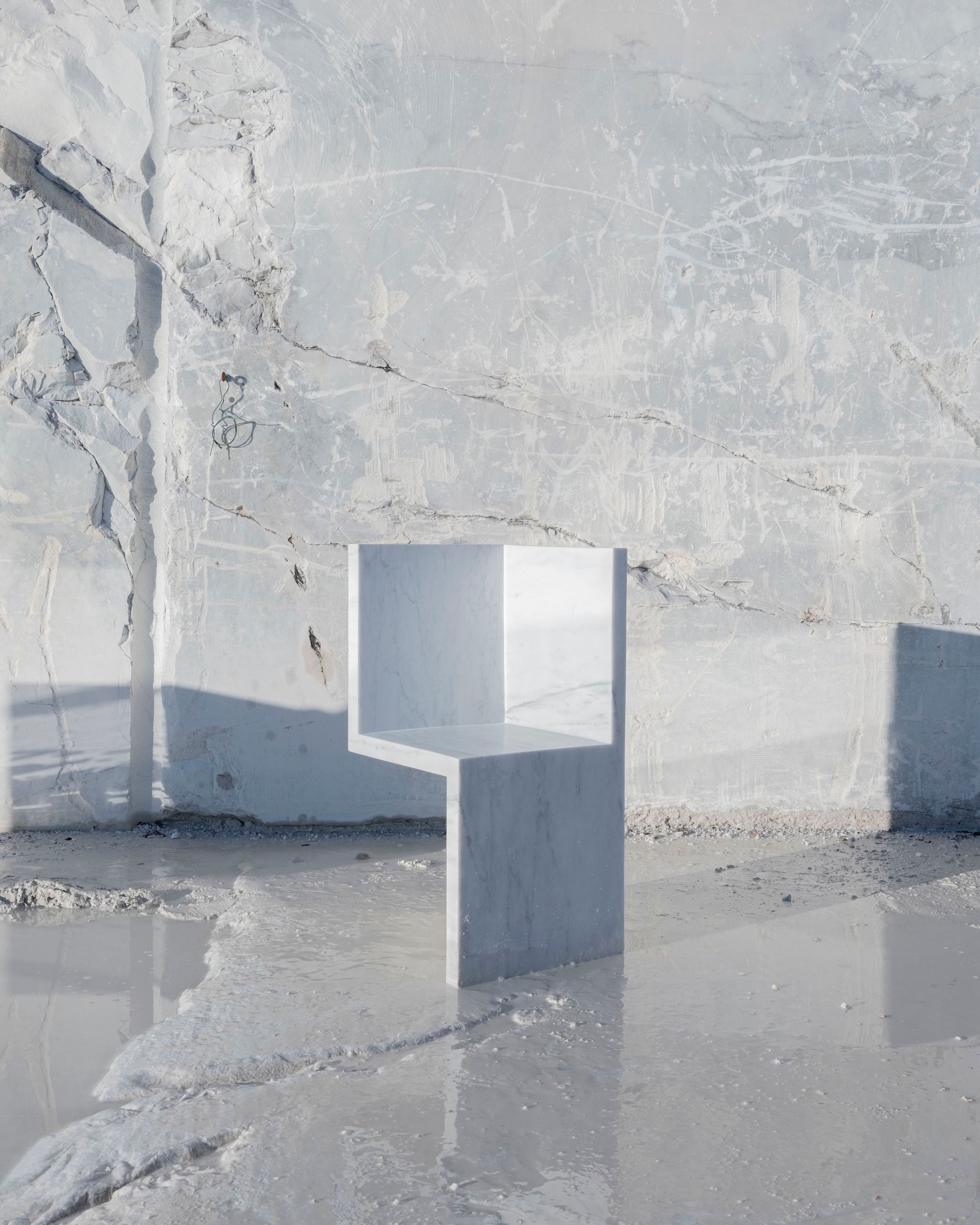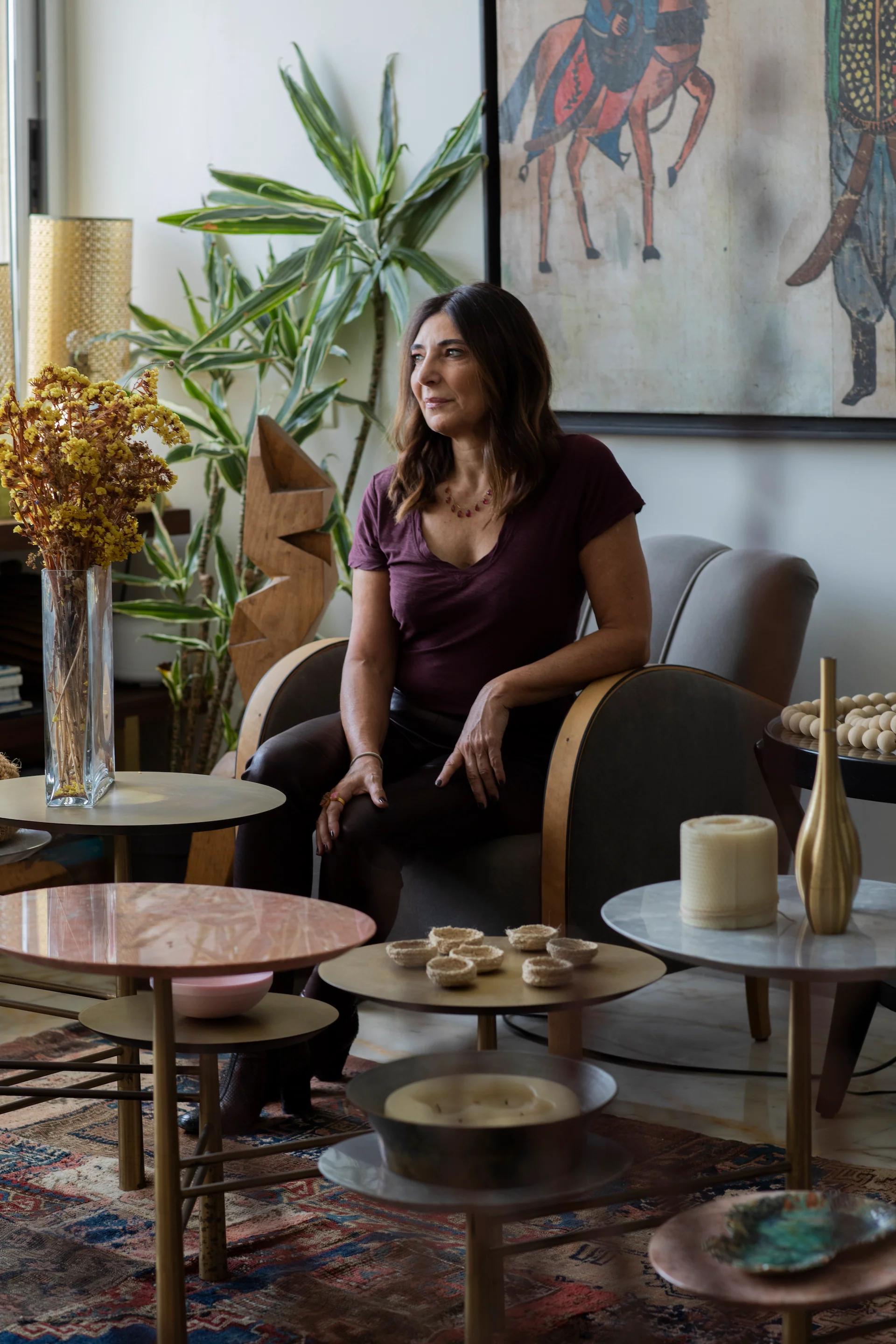CURRICULUM VITAE APRIL 14 2023
by Anna Carnick
British designer Max Lamb on design, play, and getting his hands dirty

DESIGNER MAX LAMB
Photo courtesy of Nuria Rius
“I’ve always been a maker and a tinkerer,” British designer Max Lamb says, recalling his idyllic upbringing amid the wild moorlands and beaches of Cornwall on England’s southwestern tip. “The beauty of nature was all around, and you didn't need loads of computer games or plastic toys to keep busy. I was just out in the landscape, building things, literally working with the landscape to keep myself occupied. I’ve always played by making.”
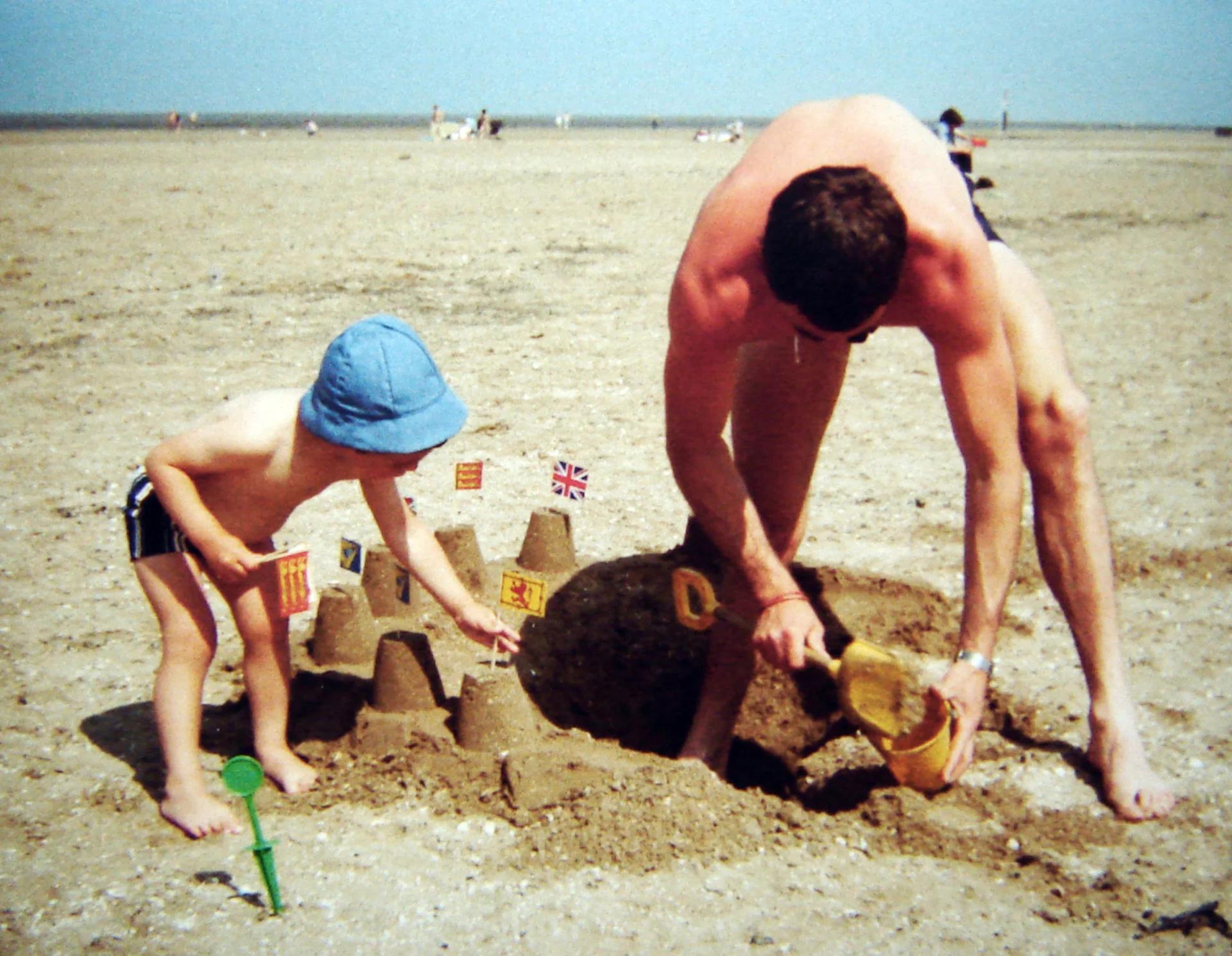
A YOUNG MAX LAMB AND HIS FATHER
Photo courtesy of the designer
Fast forward to today, and the 40-something, London-based designer’s internationally acclaimed practice is sustained by that same creative spirit and deep appreciation for the natural world. Happiest when he’s getting his hands dirty in the workshop or exploring raw materials in their natural environments, Lamb creates one-of-a-kind furniture and ceramics born of hands-on, labor-intensive investigations, often using homemade tools and traditional processes in unexpected ways. As he puts it, “I take play very seriously.”
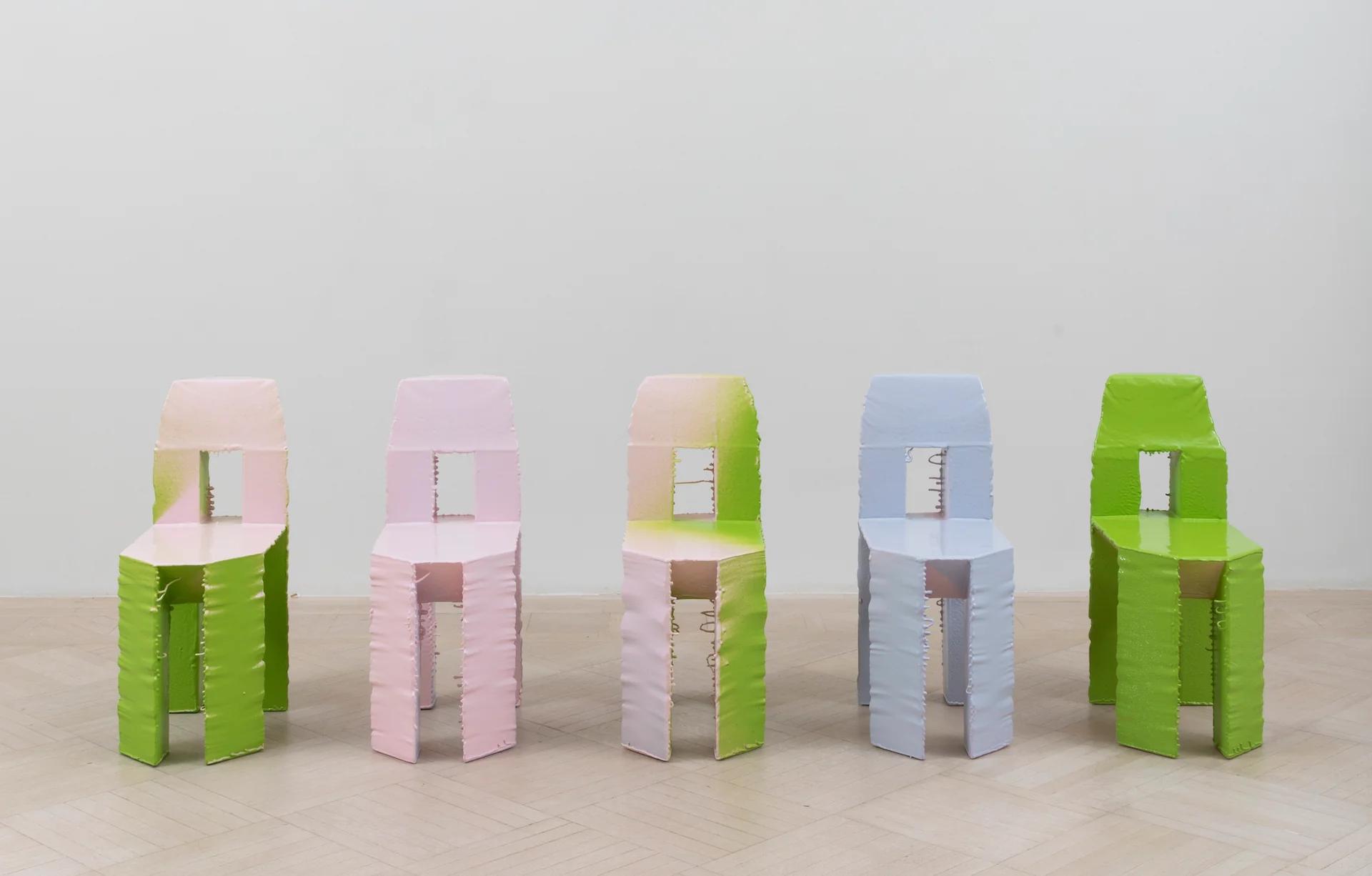
MAX LAMB/ INSTALLATION VIEW, POLY RAINBOW ECONOMY CHAIRS, 2022
Photo by Dan Bradica, Courtesy of Salon 94 Design and the designer
While Lamb’s approach may seem lighthearted, his mastery over making is palpable. “My ethos of design, really, is that to be a good designer, you need to fundamentally understand the physical properties of the material you’re designing with, the tools and processes—be they low-tech hammer and chisel or high-tech CNC or 3D printing. You need to have a deep knowledge of those materials and processes to be able to do the work.”
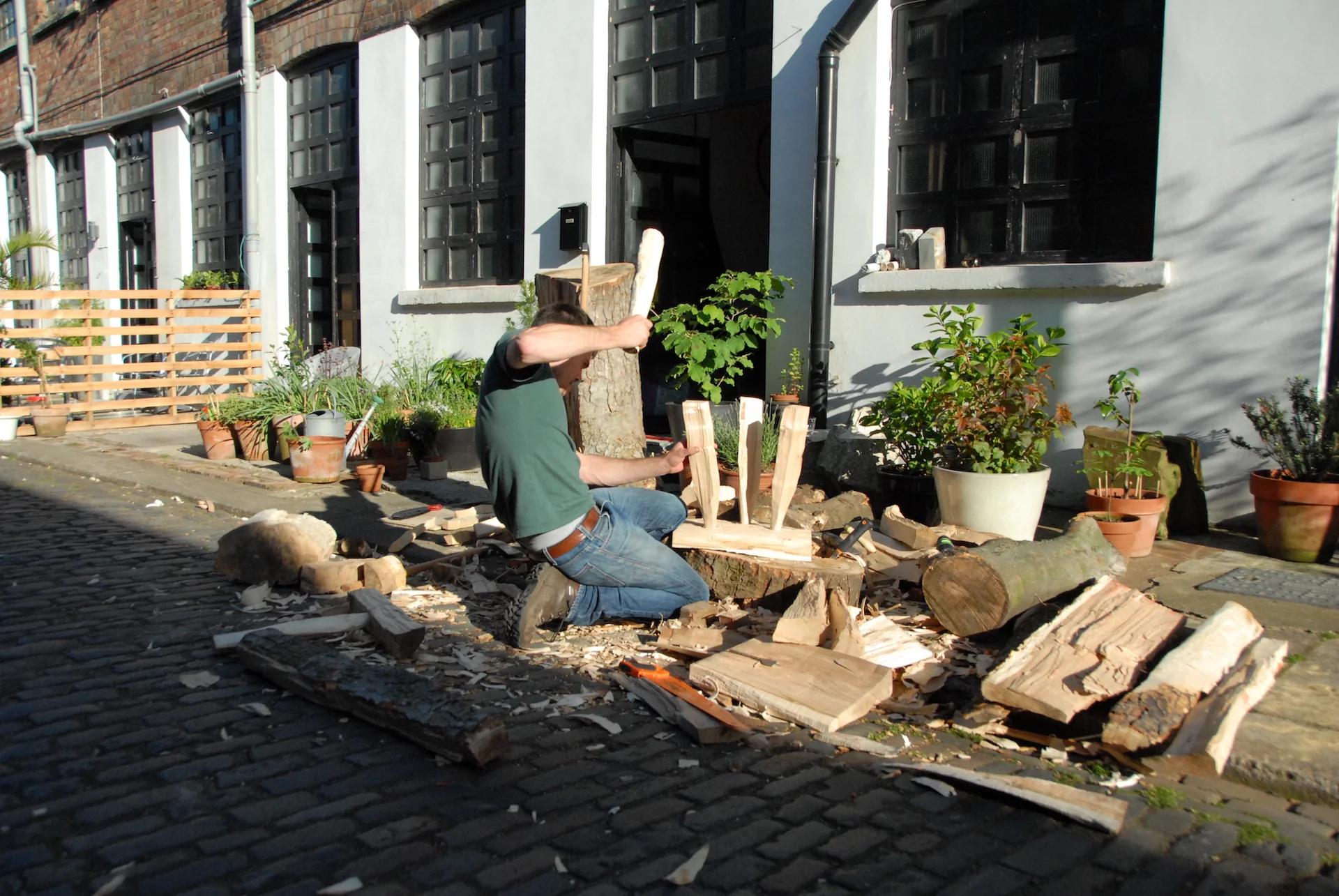
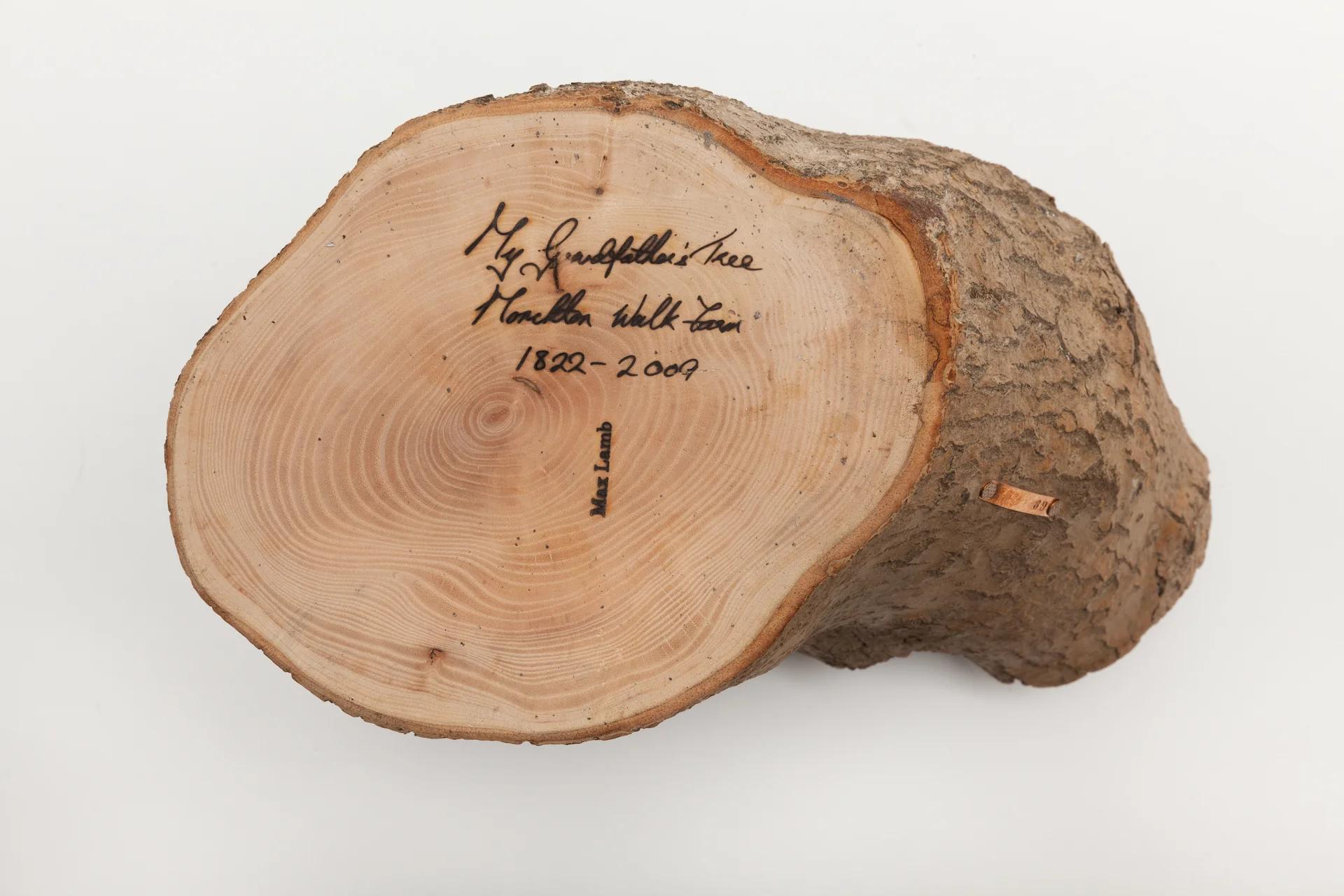
MAX LAMB/ ABOVE: LAMB AT WORK AND A FINISHED PIECE FROM MY GRANDFATHER’S TREE
Photos courtesy of Gallery FUMI
Lamb frequently looks to his immediate environment both for inspiration and as a testing ground. For Pewter Stools (2006), for example—one of his earliest, breakout projects—Lamb poured molten pewter into molds dug by hand in the sands of the Cornish beaches he once built sandcastles on. (The project earned him an opportunity to recreate the process at Design Miami/Basel in 2007, and gallery relationships followed soon after.) More recently, he meticulously dissected a 187-year-old ash tree he’d felled at his grandfather’s farm—both to honor his grandfather and to give the majestic tree a second life as tables and chairs (My Grandfather’s Tree, 2009-2015). And he regularly enjoys farflung expeditions, as he calls them, “crawling down to the deepest quarry in Portugal or up [into] the mountains in Italy, and working with the raw material directly, in situ.”
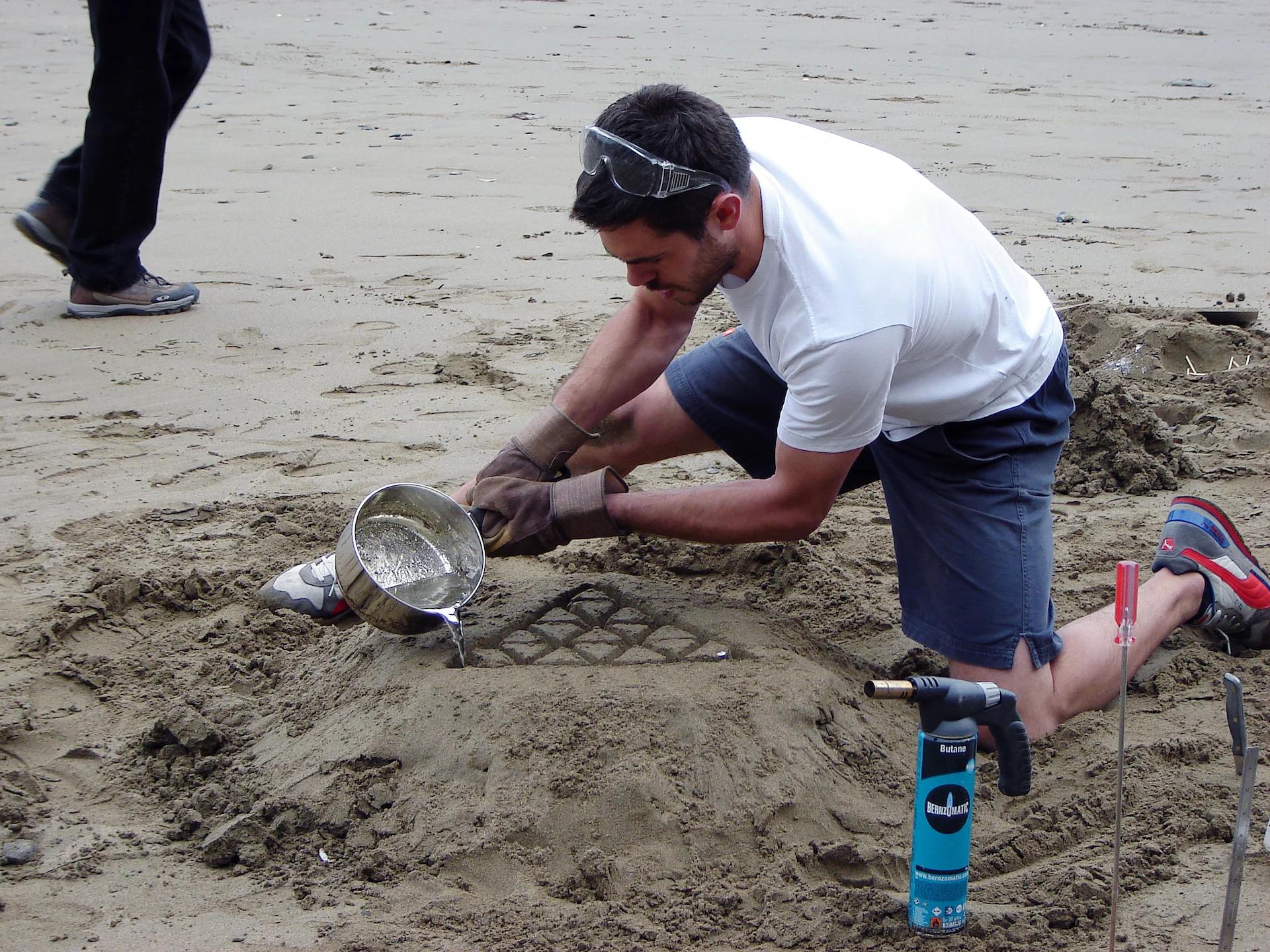
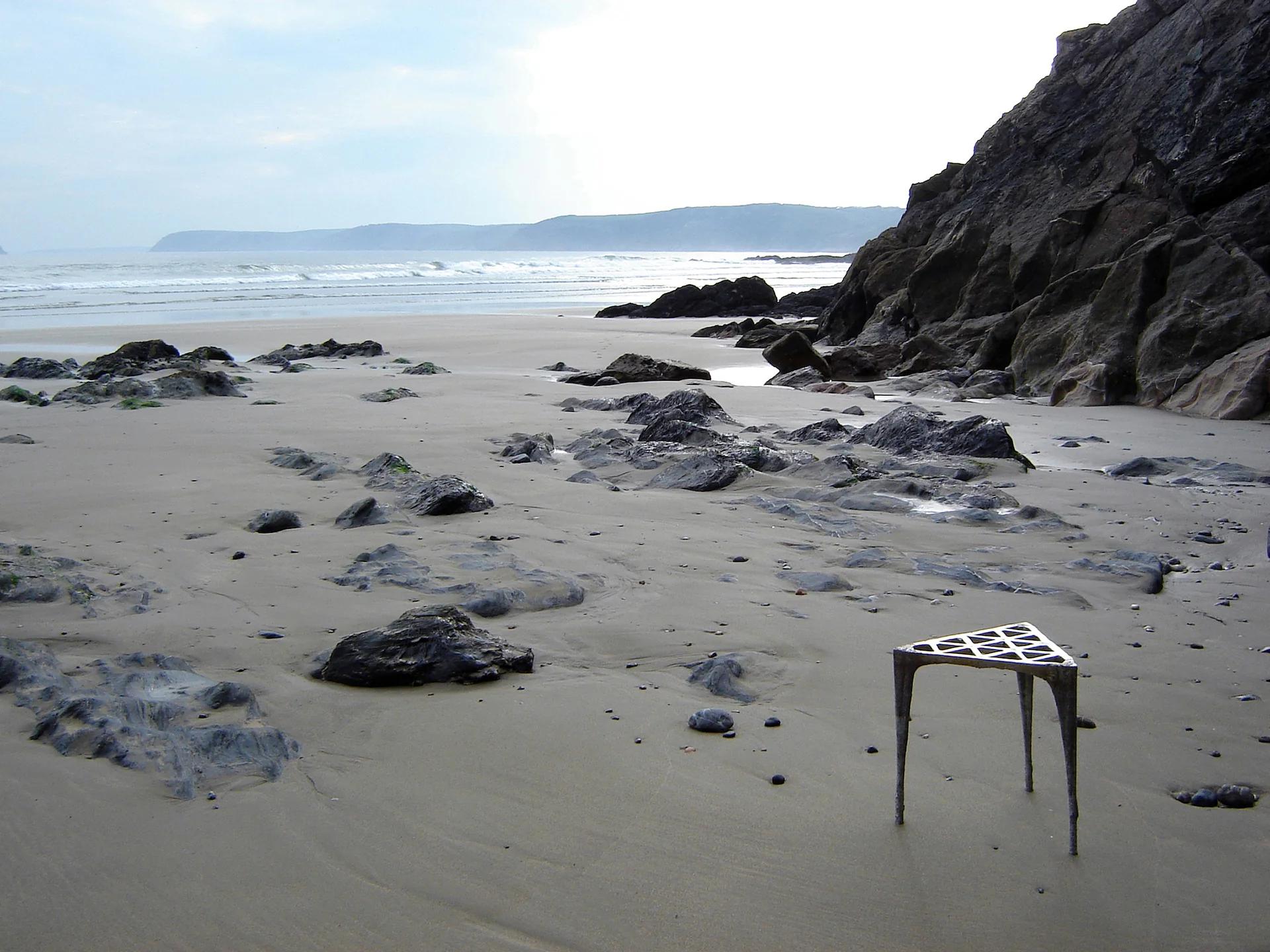
ABOVE: LAMB CREATING HIS PEWTER STOOLS AND A FINISHED PIECE
Photos courtesy of Max Lamb
Design historian and curator Libby Sellers, who has frequently worked with Lamb over the years, including him in shows at the Design Museum London and her own eponymous gallery, observes: “Max’s approach to materials and making has always carried a ‘can-do’ confidence. It speaks to both his compelling spirit of adventure and veracity, which are reflected in his finished work. As his practice has evolved, he has kept hold of this sense of spontaneity, curiosity, and playfulness. Time and experience have served to enhance his conviction in the joy to be found in making.”
Most recently, at the 2022 Design Miami/ fair, Lamb’s Cleft Chairs in platinum and gold, on display with London’s Gallery FUMI, earned the event’s best in show Contemporary Design Award. Each of the two chairs was produced by cleaving a freshly cut log using a froe that splits the wood along the grain—leaving the natural structure of the wood visible and touchable. The wood was then covered in gold leaf and platinum, respectively, leaving the material’s natural beauty frozen in time under a metallic finish.
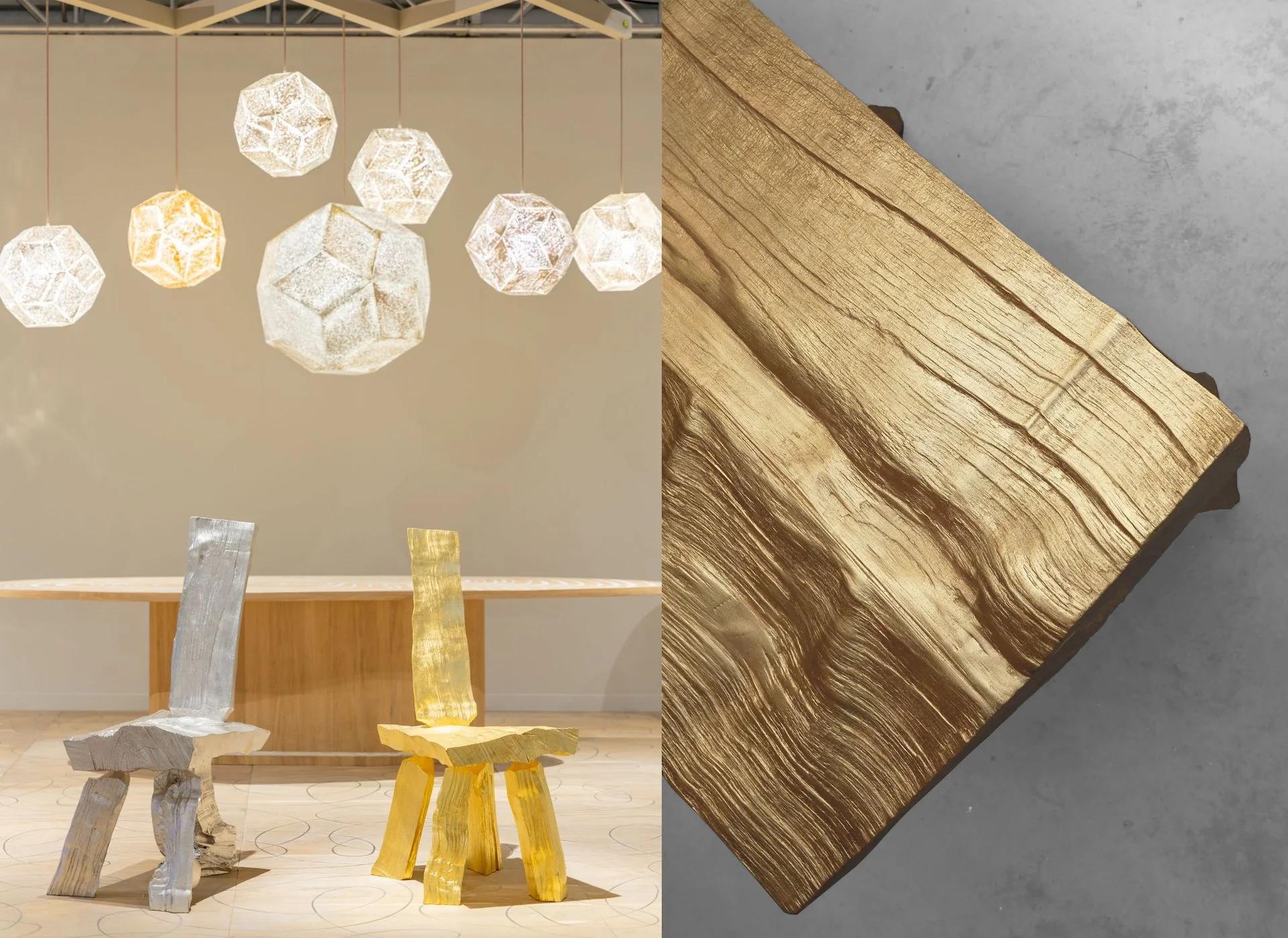
MAX LAMB/ CLEFT CHAIRS AT DESIGN MIAMI, 2022 | DETAIL OF A CLEFT CHAIR
Photos courtesy of Gallery FUMI
Lamb has become one of the most respected voices in design today by honoring age-old craft traditions, celebrating the maker’s mark and the inherent qualities of the materials he chooses. “I want the process to be communicated in the final object. So the final piece speaks of itself; it tells its own story of conception and completion.”
So when he’s splitting wood with an ax or a froe, while he guides it a bit, Lamb says, “the piece of wood splits how it wants to split, because it has its own personality. And what's important for me is to then not try and remove that by sanding it or polishing it away. I want the signature of the tool to remain; it’s like a fingerprint of the process.”
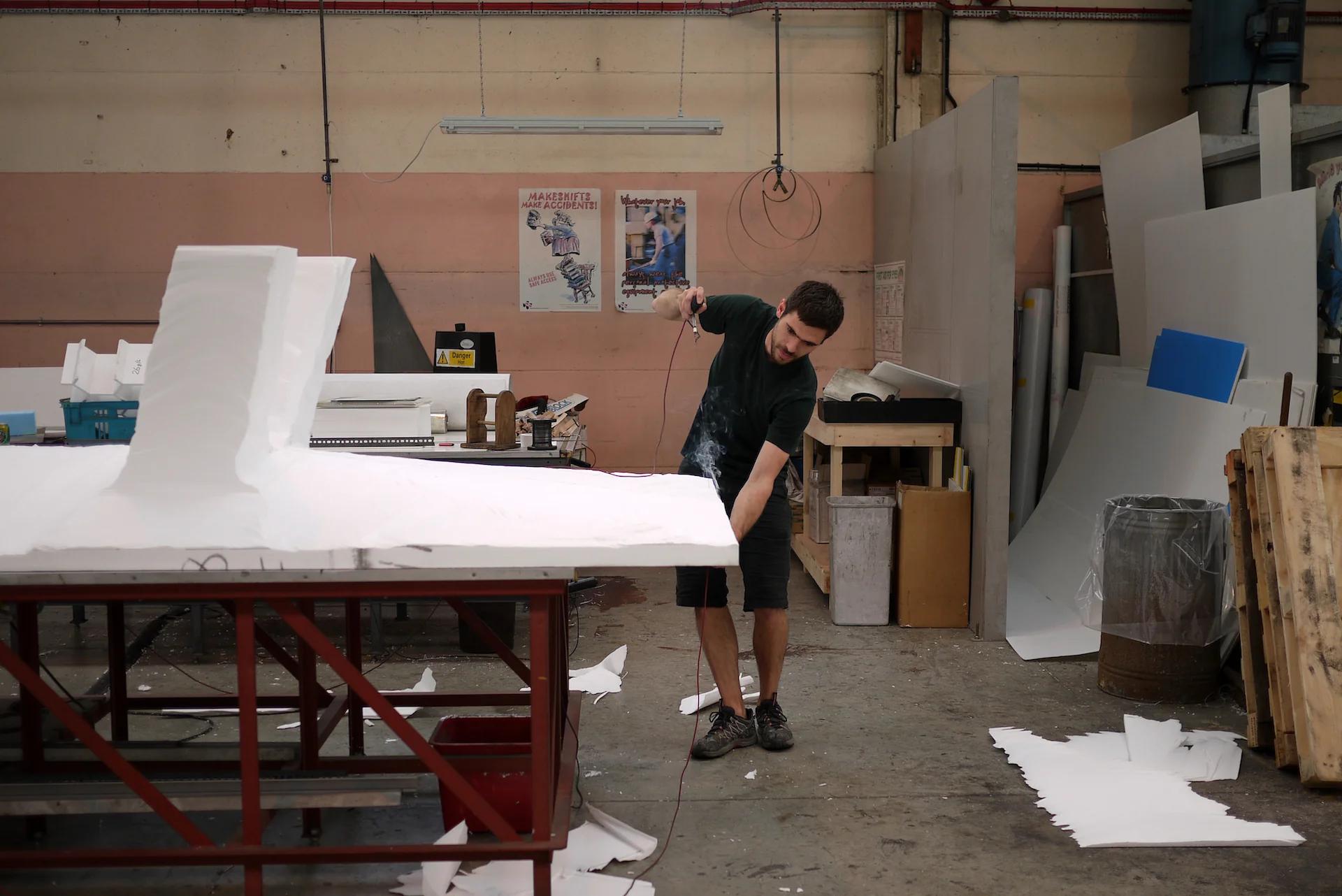
LAMB CARVING POLYSTYRENE
Photo courtesy of the designer
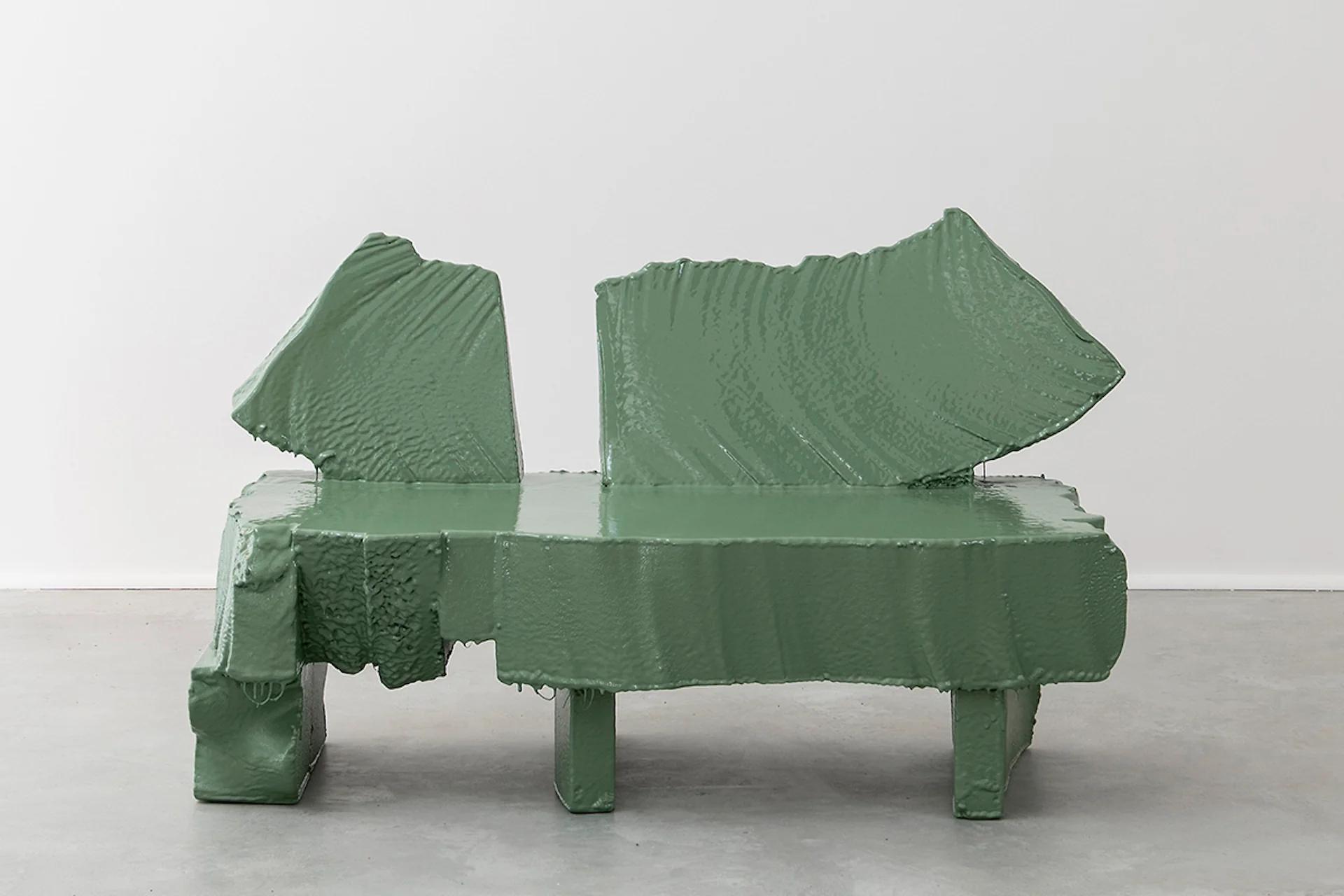
MAX LAMB/ POLY BENCH 2021
Photo courtesy of Gallery FUMI
Similarly, when carving blocks of expanded polystyrene for his Poly and Poly Scrap furniture series, “I use a plethora of tools, most of them homemade, that leave an imprint on the material. It’s just part of the process that could be seen as a scar, or a sort of defect even, but actually, I believe it speaks of itself. It’s immediately apparent the tool that’s been used to create that piece. It describes the process of carving the material, and gives [the final work] a personality that isn’t contrived.”
Looking back, Lamb credits not only the bucolic landscape of his childhood but also his father, a former survival instructor in the Royal Air Force, for modeling quick, flexible thinking and problem solving. “He would go off to do jungle survival in Brunei, or winter survival in the Arctic, and he would come back with all these stories.” Sometimes, “depending on where he was stationed, he’d take me to his work, a hangar or a warehouse full of equipment—parachutes, survival tools—and that was a big inspiration for me, this idea of survival and improvisation...I apply that mentality to how I adapt and respond in my desire to produce.”
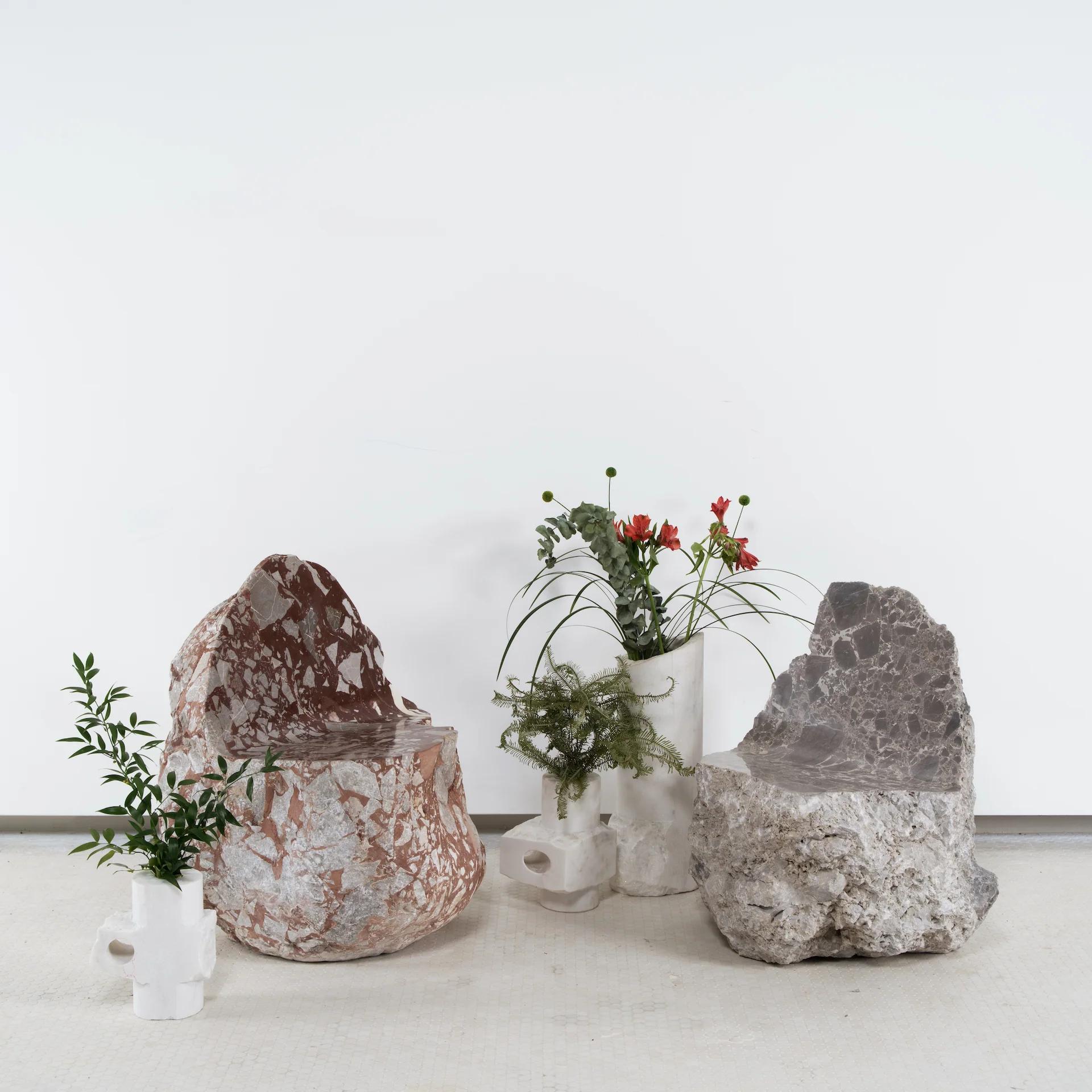
INSTALLATION VIEW OF LAMB’S DOLOMITE BOULDER CHAIRS AND DANDY MARBLE VASES, 2020
Photo by Dan Bradica, Courtesy of Salon 94 Design and the designer
This mindset was evident after Lamb graduated with an MA in Design Products from London’s esteemed Royal College of Art in 2006, where his teachers included designers Tom Dixon and Martino Gamper. His first year out, Lamb worked full time for Dixon, pursuing his own projects on nights and weekends. He had no workshop, plenty of student debt, and no cash to pay someone else to prototype, so he found ways to make do without. “I worked with my environment...using very simple techniques, making my own tools. That taught me a way of making do, of being resourceful. I taught myself a way of working that was very independent, a bit like a one man band. It gave me this mindset that I didn’t have to restrict my ideas to the tools or equipment or machinery that’s commercially available.”
Seventeen years later, Lamb’s practice remains in large part a solitary endeavor, enlisting the help of one or two assistants at most at any time to produce works for some of the world’s most esteemed galleries, including Gallery FUMI in London and Salon 94 Design in New York. He remains true to his roots, taking a seriously playful, hands-on approach to making. As FUMI cofounders Sam Pratt and Valerio Capo recall, “Max was the first designer we showed in our first gallery space [in 2008]. His work was very different from anything else we had seen around, and his projects right from the start were very much focused on process and material experimentation, which got us very excited.” 15 years on, they say, delightedly, “He keeps surprising us!”
*This article first appeared in the February 2023 issue of Miami Design District Magazine. The text has been slightly edited.

